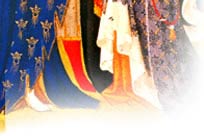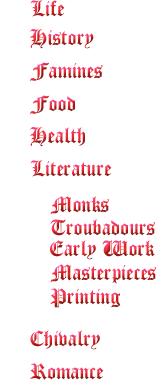 |
|||
 

|
Printing Scribes were responsible for creating much of the printed material during the Middle Ages. Some began experimenting with ways to make books easier to reproduce, and eliminate human errors made in the copying process. Medieval craftsmen, using ideas borrowed from the Chinese, carved entire scenes and stories into page-sized wooden blocks. These "block books" were much cheaper to make than hand-copied versions, and they became very popular. One of the best-known block books was the Biblia Paupernum (Bible of the Poor). The problem was, the blocks tended to wear out, and another would have to be carved in its place. These design flaws limited the pages counts of most books. John Gutenberg, from Mainz, Germany began another experiment in the middle of the 15th century that would change the course of human history. His idea was to create individual letter blocks that could be organized to form a page, then re-used on another completely different page. He ran into problems right away. Gutenberg's first letter sets were made of wood, and deteriorated much too quickly. Also, inks used for quill pens would not work on his printing press. He tried making the letters out of lead-the metal was too soft. He tried iron-the metal was too hard. He finally decided on creating molds for each, and melted a combination of metals to form the characters. Gutenberg tried inks used by Italian painters, made from lampblack and linseed oil, and finally was close to success. After exhausting his own fortune, Gutenberg enlisted the aid of partners to help him continue the project. He continued for years until 1456, when the first printed Bible was produced. But there was one other important development that made the printing press feasible. Vellum and parchment were fairly expensive, but larger quantities of paper were becoming available. This was another by-product of the Crusades, with Europeans learning this skill from the Arabs-who had learned it from Chinese. |
 |
|
 |
|||
 |
|||